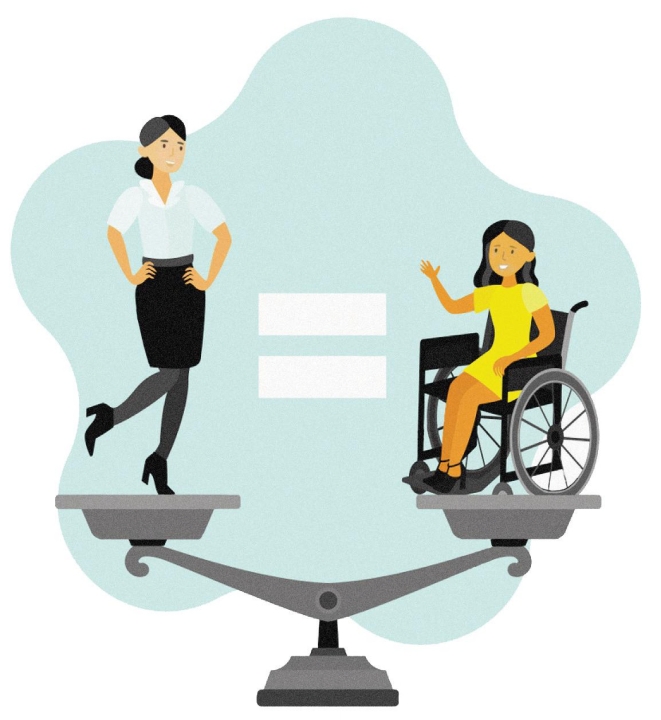DISABILITY RIGHTS AND HEALTHCARE:

AND HEALTHCARE: HOW FAR WE'VE COME... AND HOW FAR WE STILL NEED TO GO
BY LAUREN AGORATUS, M.A.
Many laws like the ADA (Americans with Disabilities Act), Section 504 (Rehabilitation Act), and the ACA (Affordable Care Act) have disability protections against discrimination. Are they working?
The National Council on Disability created a framework1 on health equity for people with disabilities. It focused on the areas of:
- Disability data
- Accessible communication
- Physical accessibility to care
- Disability awareness training for health providers
- HCBS (Home/Community Based Services)
- Nondiscrimination in health insurance
DISABILITY DATA
There are gaps in data regarding people with disabilities. Most often it isn't collected at all, or only in surveys. Although the ACA required "disability" as one of the five demographic pieces of data for reporting, the COVID pandemic demonstrated that the lack of data resulted in disparities in public health. There were instances of healthcare rationing, lack of supports (e.g. nonverbal individuals), and other inequities. These are now being addressed by the CDC (Centers for Disease Control), NIH (National Institutes of Health, and NACCHO (National Association of City and County Health Officials - see Resources).
COMMUNICATION
Doctor/patient communication must be accessible to be effective. Over 1/3 for health providers are not aware of their obligations regarding this. This is particularly true for the hearing impaired population which may require ASL interpretation.
PHYSICAL ACCESS
Not only are providers' offices inaccessible, but the medical equipment may be too. Doctors need to ensure that basics such as vital signs like weight, and screening/diagnostic equipment such as x-rays and mammograms are accessible, as well as their examination tables.
DISABILITY COMPETENCY
Healthcare provider training must avoid "ableist" misperceptions of people with disabilities and implicit bias of quality of life. Recent research showed that over 80% of providers thought individuals with disabilities had a lesser quality of life, and only 40% of providers felt confident in their ability to treat these patients.
HOME AND COMMUNITY BASED SERVICES
The Olmstead decision strengthened the ability of people with disabilities to live in their homes and communities. The Medicaid